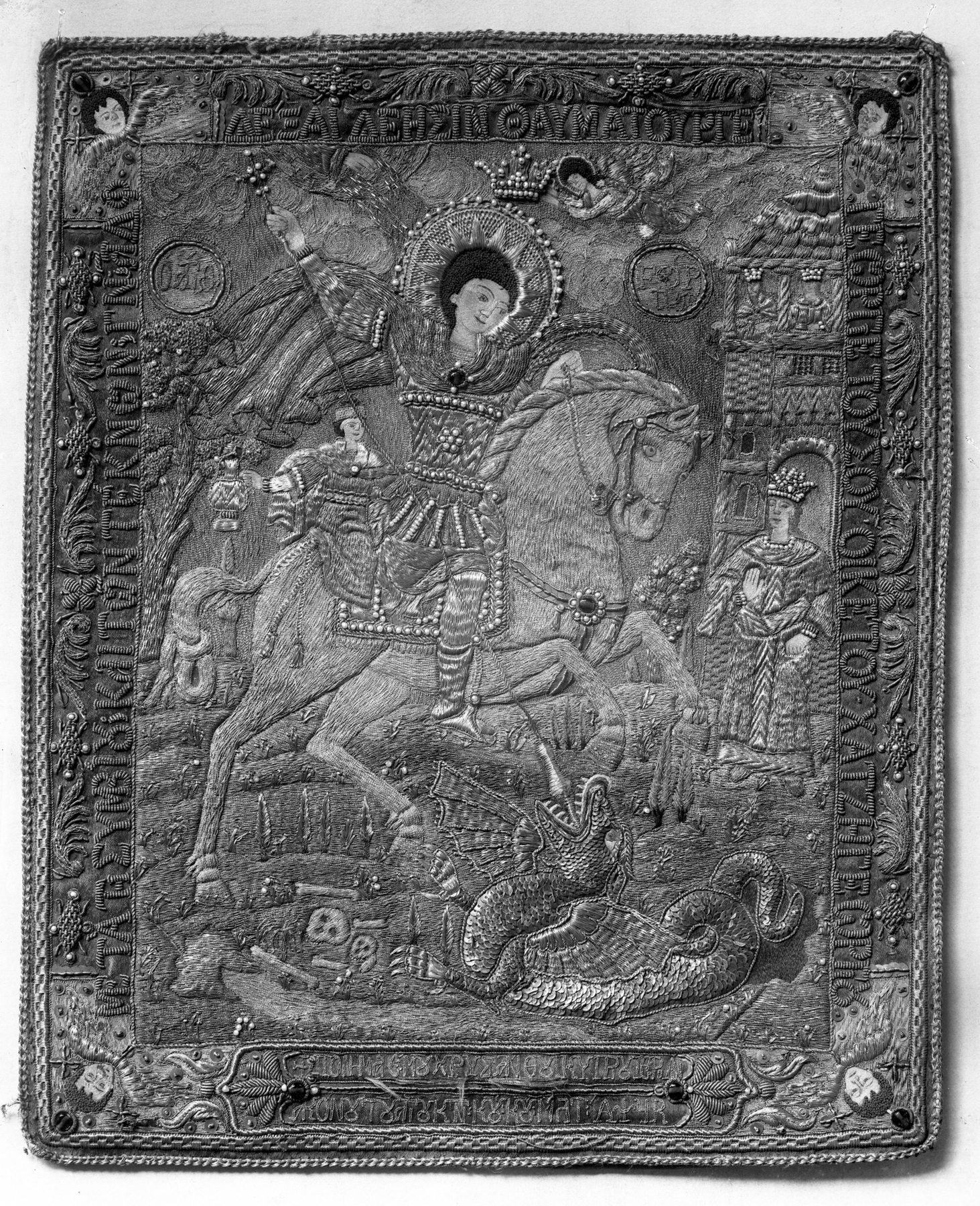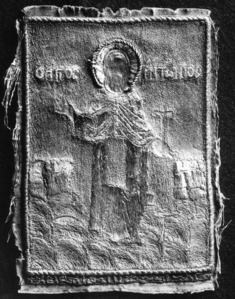Icon of Saint George Slaying the Dragon
(Byzantium and Early Russia, Textiles and Furniture )
This embroidery probably hung as an offering beneath a larger, painted image of St. George. It depicts two legendary exploits of the 4th-century Christian martyr. Seated on the saddle behind him is a boy whom George miraculously delivered from Muslim captivity and returned home. At the same time, the saint is saving a princess from the dragon that is about to devour her.
Inscription
Provenance
Provenance (from the French provenir, 'to come from/forth') is the chronology of the ownership, custody, or location of a historical object.
Henry Walters, Baltimore [date and mode of acquisition unknown]; Walters Art Museum, 1931, by bequest.
Exhibitions
| 2007 | Ottoman Embroideries and Other Ornament. The Walters Art Museum, Baltimore. |
Geographies
Cyprus (Place of Origin)
Measurements
H: 12 5/8 x W: 10 1/4 in. (32.07 x 26.04 cm)
Credit Line
Acquired by Henry Walters
Location in Museum
Not on view
Accession Number
In libraries, galleries, museums, and archives, an accession number is a unique identifier assigned to each object in the collection.
In libraries, galleries, museums, and archives, an accession number is a unique identifier assigned to each object in the collection.
83.332



